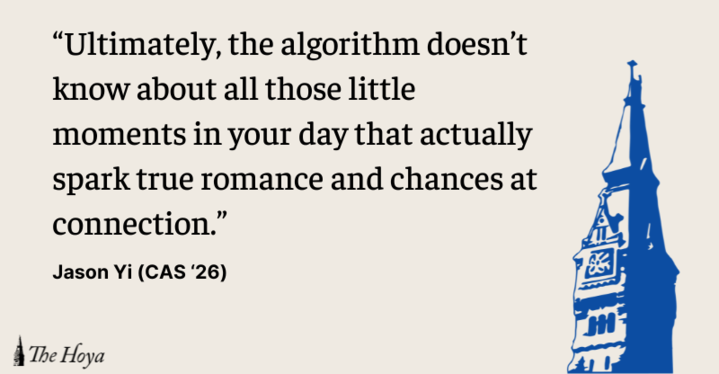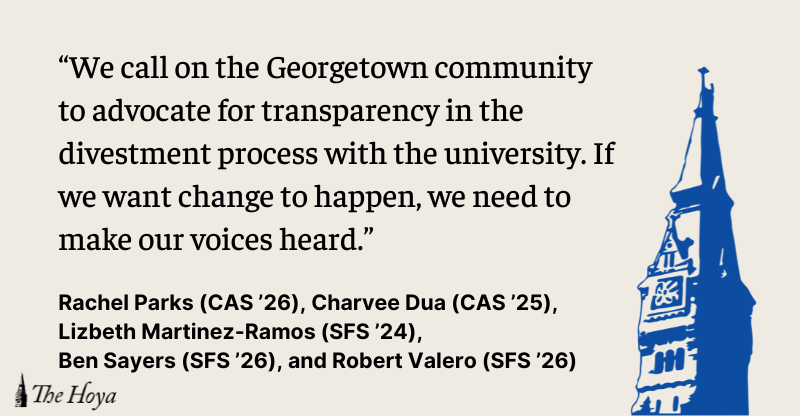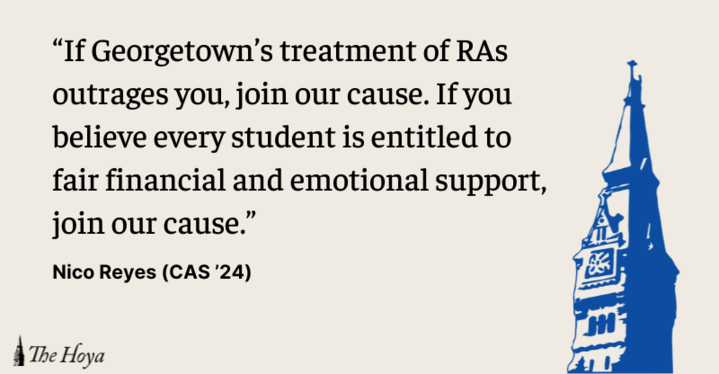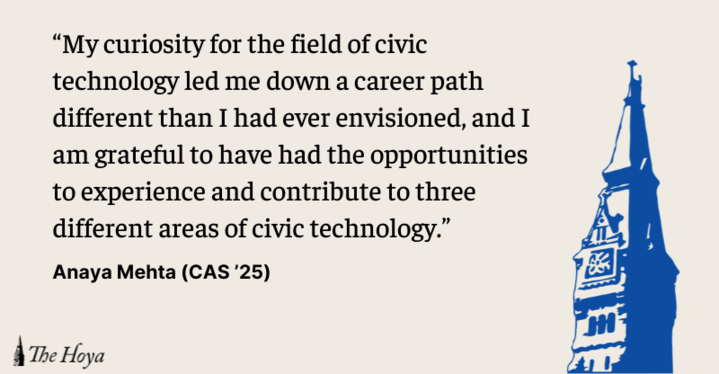With Valentine’s Day having just passed, love is on the minds of many young Hoyas. For those whose collegiate love escapades have gone a little awry, Georgetown University Marriage Pact, a questionnaire-based matchmaking service for college campuses, has always been a reliable backup plan — or just another opportunity for low-stakes shots at meeting someone new.
As a past participant in this romantic experiment and a computer science major, I was almost immediately curious about how it all worked. At Georgetown, it often feels like the dating pool is more of a kiddie pool than a “sea full of fish,” making it difficult to meet people outside of your circle. While Marriage Pact claims to have a grand algorithm behind it all, I had to wonder if it was just some unpaid interns matching names they thought sounded good together.
In the end, my curiosity got the best of me: I needed to see just how successfully an algorithm can match individuals to the love of their life. All I knew was that the Georgetown community needs more avenues for students to connect and meet new people: It’s time we take a risk and approach our own campus celebrities. And for some, a program like Marriage Pact is a lighthearted way to do just that.
So, I decided that I would try to create my own version of Marriage Pact to see if their claims of a grand algorithm were really plausible or not.
I first started on my Marriage Pact algorithm for Hoyalytics, the club on campus that taught me much of the technical skills that I used to develop the code. We first developed a Google Form that asked people about their preferences for themselves and for prospective partners. We could then cross-reference these answers between two individuals to see their compatibility.
Inspired by my math methods class, I realized that the problem of matching people in pairs could be represented by a graph — in my eyes, everyone was a point and each line that connected the points reflected their compatibility score. But I was still unsure of how to create this score itself and how to guarantee a good match.
To address the first problem of compatibility, a majority of the Google Form questions asked for answers on a scale, usually ranging from strongly agree to strongly disagree. With this in mind, I realized you could essentially calculate response similarity and match those who have related answers with each other.
With the first problem solved, that left me with the much larger issue of pairing everyone with their “perfect” match. Luckily, incredible mathematicians have done this before, and after conducting intense amounts of research in this area, we were able to formulate a solution to my maximum weighted matching problem: the Edmonds’ algorithm. To put it into other terms, I needed to match everyone who filled out the form with a partner in order to make sure compatibility was as high as possible. To do this, I utilized a piece of Python software called networkX, which allowed me to model this system and solve the issue. I simply had to create an individual point for each person, add a line between them with all the potential matches which carries their compatibility score and — voila — the algorithm produced matches!
All that was next was to test it out on actual people — and the results were shocking. After running it on Hoyalytics, I tested the algorithm on the Asian American Student Association (AASA), one of the largest clubs on campus, thinking I would see compatible pair after compatible pair. I envisioned singlehandedly changing Georgetown’s dating culture by concocting a grand algorithm to find you your soulmate.
Unfortunately, this was not the case. The marriage pact relationship rate was left at 0/176 — the algorithm alone was unable to play Cupid and instantaneously create couples. I’ll give myself the benefit of the doubt and claim that the sample size was low, but sometimes the algorithm truly doesn’t know what’s right. I hate to break it to all the singles out there, but it seems like we’re doomed if not even an omniscient computer program can find us our true loves.
But the thing is, this fate is directly in our hands. You have to remember that the algorithm doesn’t account for you waking up at 8 a.m. to attend a discussion section with that cute guy. It doesn’t know about that one girl you keep seeing at Leo’s. Ultimately, the algorithm doesn’t know about all those little moments in your day that actually spark true romance and chances at connection.
Since I did develop the Hoyalytics and AASA marriage pacts, I am obliged to encourage you to fill them out — you never know, it may be the start of your personal love story. But while the algorithm is a good failsafe, nothing can replace the random — some may even say magical — spontaneity of college. So don’t stop with simply filling out a form. Go fill your college experience with happy, maybe even cringey, but ultimately valuable experiences with all kinds of people. Don’t let the fear of the first step stop you, and maybe even say hello to your campus crush the next time you see them. You never know what kinds of people you’ll meet if you don’t take the initial risk.
Jason Yi is a sophomore in the College of Arts & Sciences.















